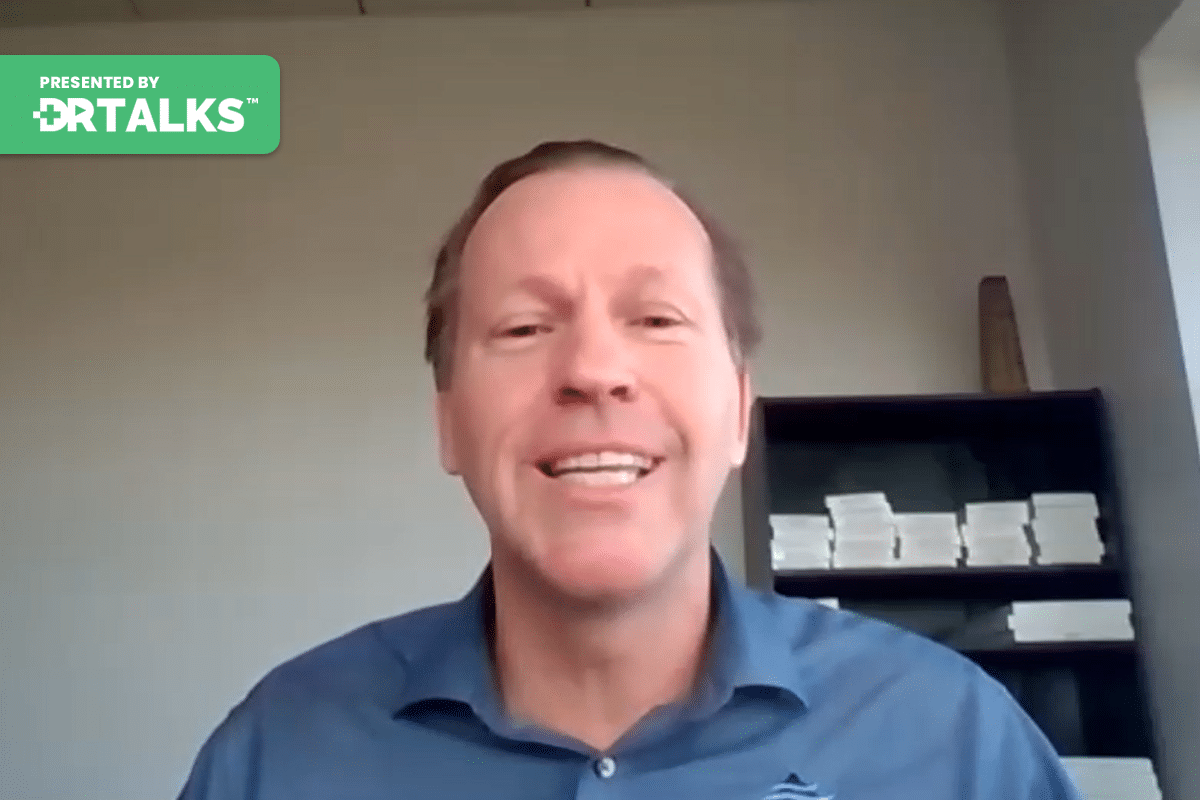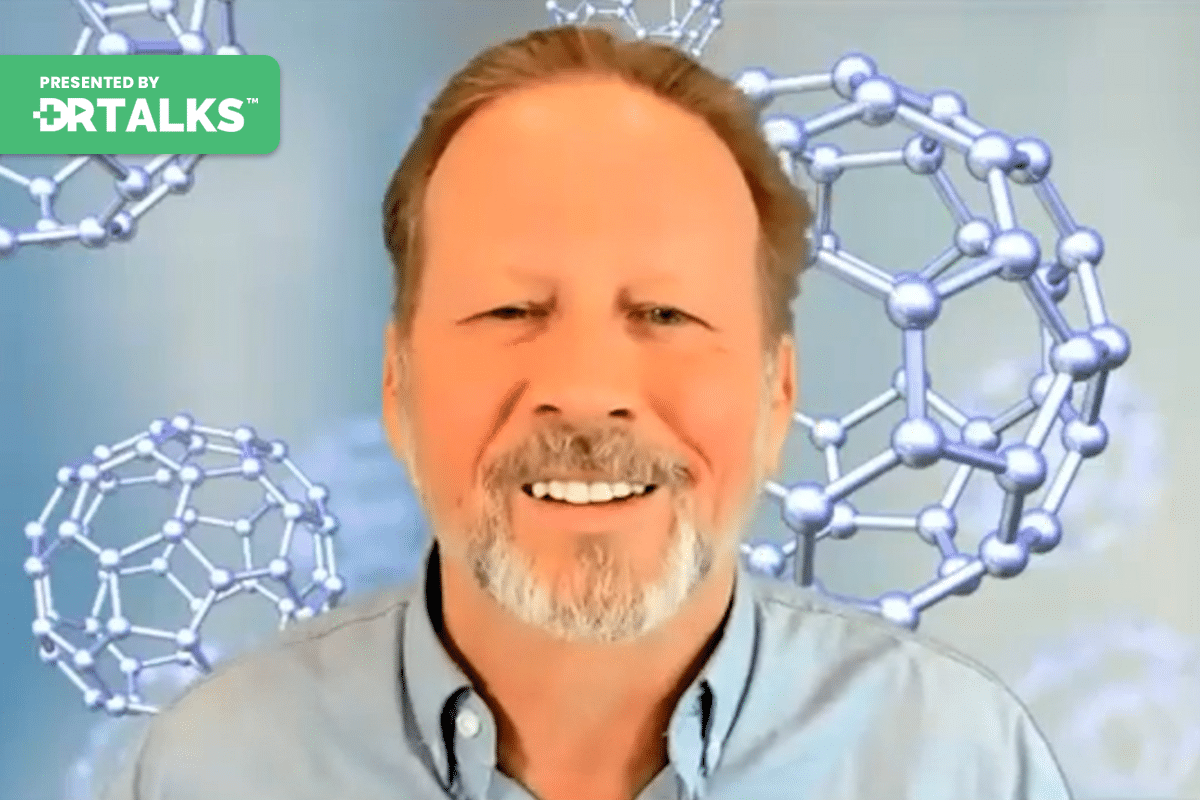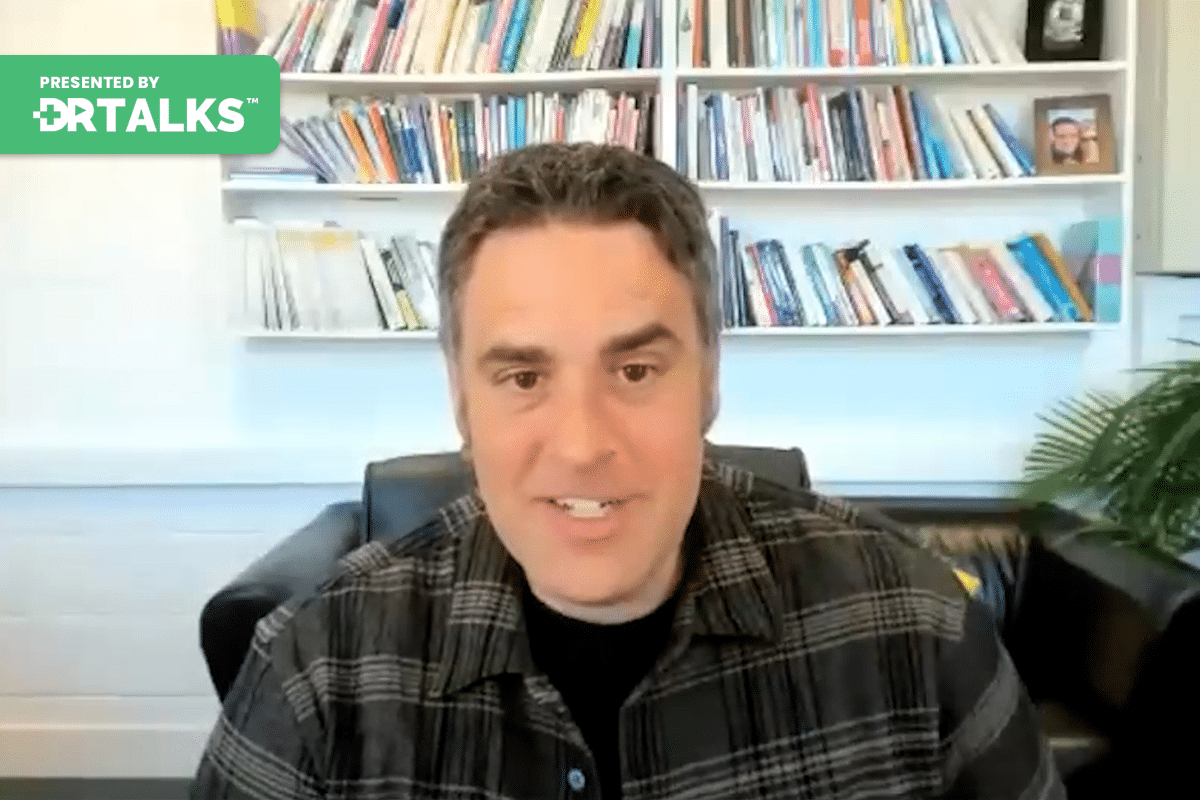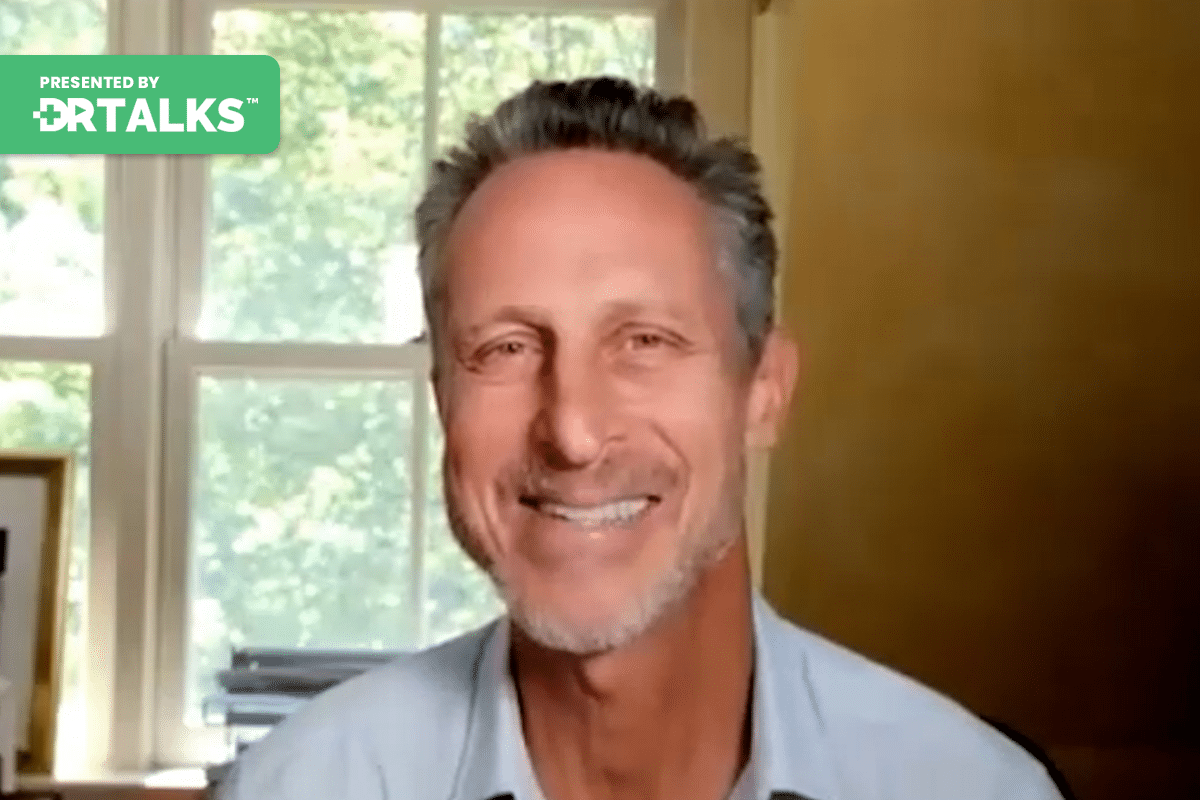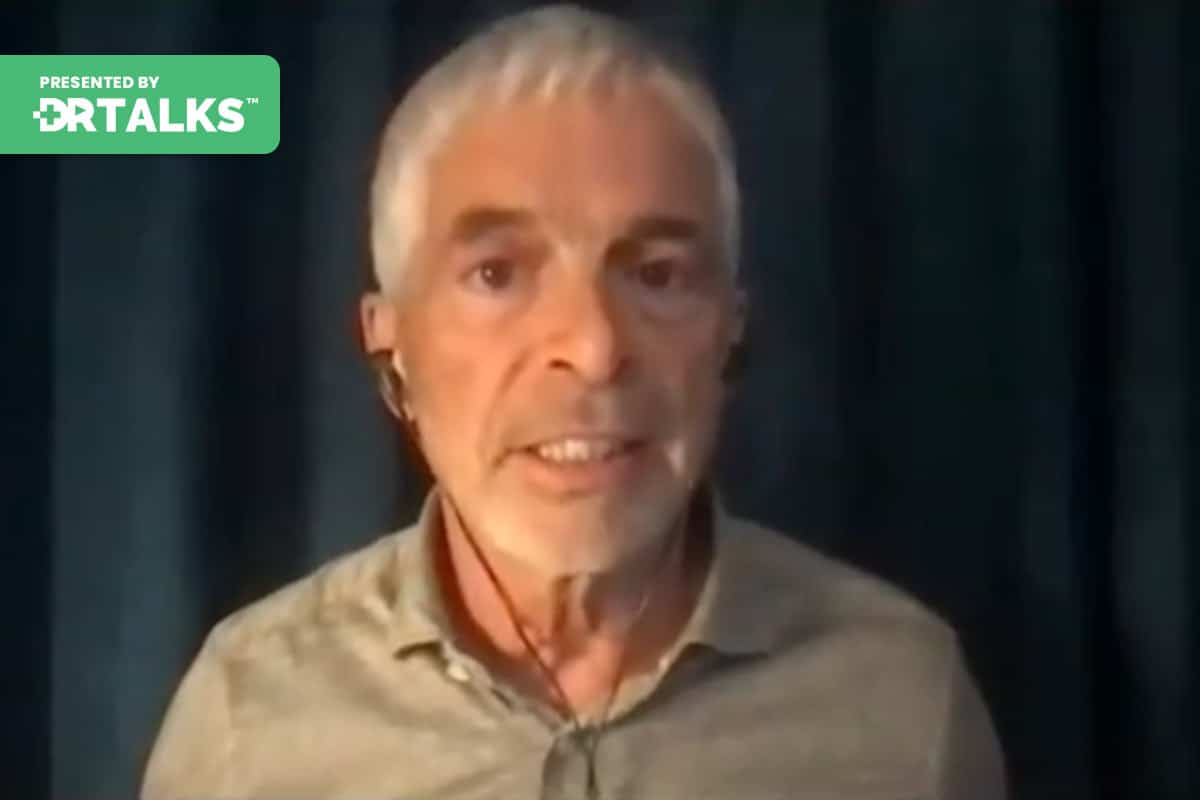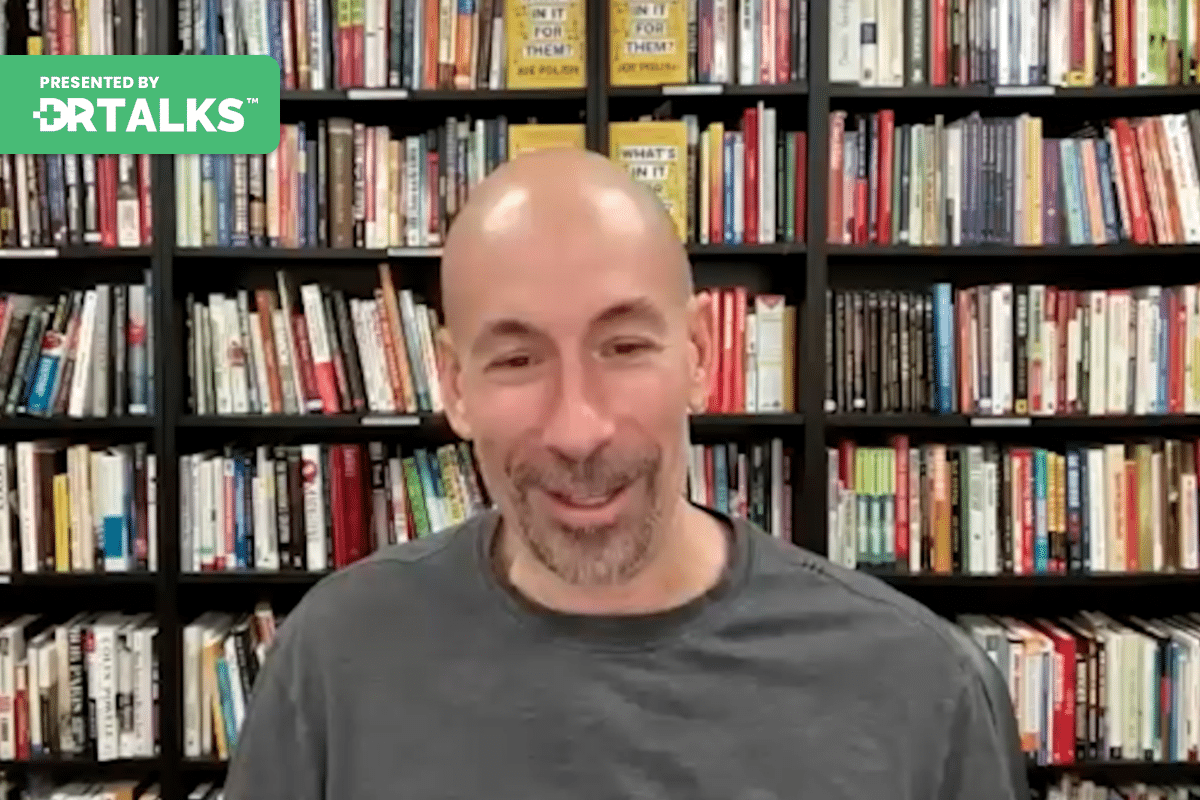Join the discussion below

Michael Karlfeldt, ND, PhD, is a Board Certified Naturopath (CTN® ) with expertise in IV Therapy, Applied Psycho Neurobiology, Oxidative Medicine, Naturopathic Oncology, Neural Therapy, Sports Performance, Energy Medicine, Natural Medicine, Nutritional Therapies, Aromatherapy, Auriculotherapy, Reflexology, Autonomic Response Testing (ART) and Anti-Aging Medicine. Dr. Michael Karlfeldt is the host of... Read More
- Discover how trauma is an energy problem, manifesting when the body perceives a threat it may not have the energy to confront
- Learn about the dorsal vagal response in the autonomic nervous system that can result in a low-energy state, impacting the body’s systems and metabolism
- Understand how light therapy can bring energy into a system stuck in a chronic trauma or freeze response without draining existing energy
Related Topics
Anti-inflammatory, Antibacterial, Antimicrobial, Antiviral, Blue, Cancer Cells, Cancer Therapies, Cardiovascular, Chronic Illnesses, Chronic Inflammation, Cytomegalovirus, Depression, Diabetics, Energy, Epstein-barr, Fatigue, Green, Happy, Heart Support, Immune System, Infections, Inflammation, Infrared, Intravenous, Iv Therapies, Joint Tissue, Light Therapy, Long Haul Syndromes, Lyme, Mitochondria, Mold, Natural Healing, Natural Killer Cells, Naturopath, Oxidative Medicine, Photo Bio Modulation, Photodynamic Therapy, Platelet Rich Plasma, Prp, Psycho Neurobiology, Red, Regenerative Effect, Regenerative Medicine, Spectrum Of Colors, Stem Cells, Tissues, Toxins, Trauma, Trauma-induced Health Issues, Ultraviolet, Viruses, YellowAimie Apigian, MD, MS, MPH
Welcome to this interview on the biology of Trauma 3.0, where we are going over the trauma disease connection and the path of freedom. In this interview, we’re going to talk about mitochondria. Now the body can go into a chronic state of trauma. We call that the chronic freeze response. And one way we can recognize it is through the physical health problems that we are experiencing. One of the core principles of a biology of trauma is that trauma is an energy problem. A trauma response happens as a result of the body syncing to the autonomic nervous system, that it doesn’t have enough energy to meet that problem or that threat. In response, it shuts the body’s systems and metabolism down through what’s called a dorsal vagal response. That’s right. You heard the vagus nerve in there and it impacts our mitochondria and causes a low energy state. So now what’s happened is that the body only does the bare minimum to get through life because it doesn’t have the energy.
One may experience fatigue and depression, but more than that it will develop conditions of chronic inflammation, long haul syndromes from infections, from viruses, Lyme mold, because it simply doesn’t have the energy to fight it. Toxins will develop because our body doesn’t have the energy to clear things out. It will only do the bare minimum to just get through. Sound familiar? I know. I’ve felt that when I talk with Dr. Michael Karlfeldt in this interview, we’re talking about how to bring energy into his system on the mitochondrial level.
And with that context of trauma being an energy problem and chronic trauma causing an energy problem, you can now understand the necessity for finding tools for us to address the mitochondria and bring energy into the system. In this interview, we talk about how this light therapy photodynamic therapy is uniquely different and better than other forms of support we can do to bring energy into the system and help our bodies pull out of a chronic trauma or freeze response. Dr. Michael Karlfeldt himself is a board certified naturopath. He is in Meridian, Idaho. He specializes in chronic illnesses, cancer therapies and regenerative medicine and has an expertize in a lot of different things, but including IV therapies, applied psycho neurobiology, oxidative medicine, all the cool stuff that I geek out about as well. In this interview we are talking about the state of the art therapy, the photodynamic therapy and don’t miss the end where he gives a very practical application for light therapy that you can do for free. You can do today every day, and can make a huge difference in your symptoms in your life. He will share specifically about what it has done for diabetics, but this would be for everyone. Let’s jump into the interview. I would love for us to dove deep into the effects of light on mitochondria, because we know that mitochondria play a big role after trauma and a person getting stuck in that low energy, low mitochondria efficiency. So I’m very excited to hear about all the different tools that we have to really support the mitochondria with light specifically. So what have you found in your experience and in your trainings around this light and then even the photodynamic, the Photodynamic therapy with mitochondria?
Michael Karlfeldt, ND, PhD
Well, I mean, we know the mitochondria are such a core component in health and disease that there’s no issue about that. If we don’t have energy, you know, we can’t do anything, we can’t detoxify, we can’t heal our genes, we can’t do anything. And so a light I mean, we are born in light. We know that photosynthesis, you know, we all the plants are out there. They’re bathing the light and they are changing all these nutrients into things that we can then use. So light this is is a driving force for everything that needs to take place in the body. And it’s not different in the mitochondria we have within the mitochondria we have these. What’s called different, as you know, that are complex. One, two, three, four. So these are like different stations through the mitochondria that these electrons are moving through in order to be able to produce energy. ATP and Light actually has a different parts spectrum of the light have different impacts on these different stations, meaning that you have the ultraviolet blue we are the green.
It’s kind of more in the beginning part of that that of the mitochondria and then towards and it’s more the the red infrared so it’s really cool to see that even within the cell, even within that that core aspect, you know the mitochondria we need light and so we currently we, we live in such a society where we are not bathing in the sun as much. You know, we a in the old days they used to have temples, you know, a heel, you know, that, that you people went to that temple and then they were exposed to sunlight and they, they healed just with sunlight. So it just kind of shows how, how crucial, just light in itself is. And so to bring that in, you know, because we are so deficient and to bring that in and to a a therapy where we can impact the body. And I think that is a core component that is like that, the main nutrient that we, the majority of us, are missing.
Aimie Apigian, MD, MS, MPH
Well, and as you say that, I think that in the sense during the day, we’re missing natural light and we’re missing all of those supportive effects that it could have. But then during the night, we’re not shutting off enough light. And so it’s like we’ve got all of our signals mixed up that are there to naturally support our body. And one of the things I love about your work is that you really are coming in to support the body to do its natural healing properties. And so with the light, tell us more about how you’ve been able to actually develop therapies around supporting that on a higher level than just even outside in the sunshine.
Michael Karlfeldt, ND, PhD
So it was fascinating and the blood so we would do some things called photodynamic therapy and then also photo bio modulation. So these are two components of the Photodynamic therapy is when we use light in a destructive way, meaning that you can sit outside and you kill light actually then kills pathogens. You know, it’s antibacterial. So we can do that intravenous li as well using light and to kill pathogens or to kill cancer cells or you know, and so light has that aspect in addition to then the photo by modulation, which is the other side where you then use it as a positive regenerative restorative. In fact, you know, we, we talked about the mitochondria and tissue and so what we’re able to do then, you know, before we just exposed our skin, you know, which is fantastic and we all should be out in the sunlight and and we have receptors in our skin that that absorbs that the the sun and and then helps to actually transport that into into our cells. But it’s the same in the bloodstream.
You know, the we have components within our bloodstream that are then absorbing the energy of the light and is able then to transport them into the mitochondria. So if we by introducing them a an optic cable, which is what we’re able to do, a intravenous layer and as the blood is then passing by, it gets and treated by that light. And we have then different parts of the spectrum where we can then expose the blood to these different colors and then have different effects. And so it’s really, it’s really amazing how technology have advanced. And I would say that it’s almost like we are having advanced technology because we are changing how we are living. Like you’re saying, we, we now we have we have too much light at night. But I would say also that we have the wrong kind of light. So it’s kind of like with food. We have too much of one component. We have all that sugar and bad fats and we don’t have enough of all the others. We don’t have a full spectrum. But here we can then bring the body back into balance using light intravenously, which is really cool.
Aimie Apigian, MD, MS, MPH
So I mean, I’m sitting here just thinking like how? I mean, I want to say weird to some people, right? To actually put light therapy into your tissues and have your bloodstream be exposed internally to light. And yet how cool that we have this technology that we can do it. And how do you choose which spectrum of colors to use in that light treatment?
Michael Karlfeldt, ND, PhD
So it depends on the individual. I mean, most of us we need full spectrum. So the majority people is just great. Yeah, well, we’ll run all different colors. So we run, you know, ten, 15 minutes of ultraviolet and then a blue and then a green and yellow and then red and then infra red. And each one has a different effect on the body, like the ultraviolet blue. Yeah. That tends to have a very kind of antimicrobial effect, but it’s also very anti-inflammatory. So if you deal with a lot of inflammation, then you want to be more in that kind of cooler type of energy, which is the ultraviolet blue spectrum, and then the green. Yeah, it’s a very kind of heart, you know, support. Any time you have any heart issues or cardiovascular, then green this is a very, very great color for that. Yellow We think of. Sunshine Yeah, it’s our happy, happy color. And so people that are depressed, you know, it’s yeah, Gallois is fantastic for that. And a yellow is also very antiviral. So if you deal with any kind of Epstein-Barr or any kind of viral cytomegalovirus, which associated with a lot of different cancers or the health conditions, then you bring then yellow m av you have red or infra red that’s very activating energy. But also it turns on the natural killer cells. So if you want to go in and kill things, then using them, the red that really helps them to add to can kill off pathogens, kill off cancer or kill off too. So you just activate that, that immune system. But it also has a very regenerative effect, you know, so it help to really regenerate tissues. So for instance, you can then let’s say you have a joint tissue and you don’t want to do you know, I got a bad knee and you don’t want to do surgery.
So then you think get other alternatives like let’s say PRP, that we do have platelet rich plasma or even stem cells, you know, inject stem cell into the need for that regeneration. So if you then bring them, we have that an optic needle know where you put a red laser red into it and that and then you put that into the knee space where the tear is. So where the inflammation is, you can then activate those platelets even more or you can activate the stem cells even more. So in some cases, you can then activate the stem cells by like 20 times by stimulating them with a red light. So it has that restorative regenerative effect. So it’s so that’s why it’s so good them to kind of look at the individual and see what’s going on. What, what are they need? Do we need activate immune system do need to calm down inflammation what or do we just need to turn on mitochondria? What do we need to do?
Aimie Apigian, MD, MS, MPH
And so I’m sitting here wondering like, how does this actually work? Dr. Michael Because if you’re inserting something, I’m assuming that then the light is just in that probe. Like it’s not like you’re releasing the light into the space. It’s not like you’re releasing the light into the bloodstream. It’s just exposing it internally. Am I understanding that correctly?
Michael Karlfeldt, ND, PhD
Yeah, exactly. So we have, you know, so we introduce an object, a needle, then into the arm. And so as the light is, as the blood is passing by. So we’re just kind of shining in that area. It is really cool because you can see the patients can then see kind of how their arm lights out up internally. So you see this got a red glow or yellow glow or you know, is really, really cool. And so you introduce that and the blood will then pass by about once, once every minute that passes by. So for like a 60 minute treatment, you will then treat your whole blood volume like 60 times.
So. So every time that those red blood cells and the other components of a fatty fatty acids, components within the blood as is passing by, picks up the like and then kind of transports that energy and that it dumps it off. And and then a lot of times what happens wherever the body needs it the most, that tends to be the gravity point. Yeah. That then kind of that, that that energy is attracted to and, and then kind of dumps off that kind of energy and to that area which, which is really amazing.
Aimie Apigian, MD, MS, MPH
Are most treatments that you do 60 minutes long then?
Michael Karlfeldt, ND, PhD
It depends. Sometimes I do a little bit longer. Yeah, but it tends to be a minimum of 60 minutes if we do it intravenous, if you would do like I was talking about doing like a knee or a joint or a shoulder or something like that, maybe like half an hour, 15 minutes to half an hour. You can also for children, obviously, some of them don’t like doing needles. Yeah, it’s it. And so then you can use a little device. We actually put it right in neat the tongue so we have a little showerhead where we put these optic cables in and we can just put a rod and eat the tongue and then as the blood passes by there, it gets treated. Yeah. So, then you can just, you know, for people, children dealing with autism or ADHD or any kind of brain inflammation, you can then use that light and treat the blood as it’s passing by.
And that can then reduce inflammation, it can kill off pathogens, they can do a lot of things. They combine that then with what’s called a photosensitive, sir, which will then increase certain absorption of the light and then can kill off. Let’s say you deal with cancer, then you can use a photosensitive so you can introduce that orally or intravenously. And, and then that attaches itself to cancer cells or attaches itself to lime spirit or to viruses or bacteria. And then as it gets unexposed to light, that photosensitive will pull more light towards that pathogen or cancer cell and trigger oxidation to kill it off. So you can use these different tools and for that.
Aimie Apigian, MD, MS, MPH
So as I’m thinking of someone who’s kind of been in this, what we call around here a chronic trauma or chronic freeze response. And they’re on a cellular level, they’re in overwhelm. And the downstream effects on their biology are so much of what you’re describing. Dr. Michael So they’ve got the chronic inflammation and whether that’s in their gut, whether that’s in their joints, whether that’s the elevated CRP, it can show up in many ways. But one of the ways it also shows up is in the long haul syndromes, whether that be whatever virus that is, but kind of having those prolonged symptoms of the cytomegalovirus or Epstein-Barr virus or even something like Lyme or mold and not being able to really have what the body needs to fight those infections off and get back to a great state of health.
But then you mentioned the brain inflammation, and that’s a big piece of the biology of trauma as well. And so I’m seeing kind of like the picture of who could this help? And it really is then anyone who finds themselves relating to what we’re talking about here, where they can feel that their body is in this chronic state of disease. And they may have tried a lot of different things. They may have tried a lot of different therapy in the past. But realizing that their body is still stuck and their body feels like it’s shutting down and hasn’t been able to bounce back, it sounds like that would be really a type of person who could really benefit from this photodynamic therapy.
Michael Karlfeldt, ND, PhD
Yeah, it’s any time when you feel like you’re not able to kind of move through that barrier and you need kind of that extra push, then photodynamic therapy is it’s wonderful. I mean, and who can benefit? Well, who benefits from light? Which plant would do well. Yeah, but with sunlight. Well they all do. Yeah. So it’s the same and we are being so light, we are being so frequency and light is a way to then add to administered frequency to the body. And if we can then administer healthy frequency like I know with a lot of your other interviews that you’ve done, you know, we’ve spoken highly about belief systems and traumas and how that will then hold certain frequencies in the body. So what we’re needing to do then is then to introduce is to let the body remember what healthy frequencies are and then to be able to then introduce that, to kind of reinforce that with healthy light and introduce that intravenous lead. So we can actually kind of get it there directly. And so in addition to then changing our beliefs and working on the traumas, then to support that system on a physiological level and energetic level, at the same time, it becomes a huge push when you feel stuck in any kind of disease.
Aimie Apigian, MD, MS, MPH
And honestly, Dr. Michael, that being stuck is like the key feature of the chronic trauma response in the body is it gets stuck. And so much of what I teach is that trauma is an energy problem. Going back to what you started this conversation with is that the mitochondria are really at the core of everything and when we don’t have energy, that’s what will happen. The body will get stuck and it will get stuck in these negative frequencies that it doesn’t have the energy to reset itself. And so this light therapy seems like a wonderful support to bring in to help the body reset its healthy frequencies.
Michael Karlfeldt, ND, PhD
Yes. Because with the trauma, with belief systems. I mean, we know that triggers genetic changes. And you have the mitochondria is like the and it’s the one that helps to correct those genetic changes. So any kind of epigenetic transformation involves the mitochondria and mitochondria is a bacteria that actually didn’t I mean, it actually is something that we are infected with. And it happened in through the evolutionary process. We benefited from that. And we we saw a symbiotic relationship and that bacteria likes light and wants like it likes that that that movement of energy and to be able to then introduce light into our system in a very efficient way where we can do it directly to through the tissue or intravenously like this, then we will then support the mitochondria to be able to add to correct a lot of these different epigenetic changes or even genetic generational changes that, that took place and and support that while you then work on it through the psycho emotional side as well. So addressing it from both sides becomes so much more powerful.
Aimie Apigian, MD, MS, MPH
And what I find fascinating about the light therapy specifically is that unlike other types of therapy that we can bring in to address the biology piece of trauma, light itself is energy. So it’s not like taking a supplement that will help with energy. The light itself is a form of energy, and it also helps the mitochondria be more efficient in its energy production.
Michael Karlfeldt, ND, PhD
Because. Because any time you take a supplement or you eat a certain food, there’s certain amount of energy you need in order to be able to transform that, to transported, to change it. All of these different things requires energy. So. And how do we know that that’s going to end up in the right place? How do we know? I mean, so all of this intelligence is required to be there. We think we take vitamin D and then all of a sudden it’s going to end up in that and the exact perfect spot that it needs to be. But if we’re then dealing with a chronic disease, then that intelligence to be able to guide those nutrients may be broke and they may end up in an area where you have too much vitamin D and not enough in the area where you actually need it. So then to bring in something that doesn’t require any energy, in fact, it is just supplying the energy, supplying intelligence, supplying frequency without any need for the body to do anything becomes huge in that way. We’re then able to then bring more intelligence to be able to use the resources like the supplements we’re taking, the good food we’re eating, all of these different things becomes even more effective because we are then turning on the, the, the mitochondrial activity, the intelligence of the body. And so yeah, it’s it’s it’s a it’s a marriage in heaven. You know, you got to bring light in order to be able to support all the other aspects, all the other good things you’re doing as well.
Aimie Apigian, MD, MS, MPH
And what I love that you pointed out is that it doesn’t take up energy to be able to absorb this form of energy and be able to utilize this energy like other modalities that we can take to help improve our energy. It actually does take up energy first to then be able to have us use them with trauma. So one of the things that I know that you are very familiar with in all of your clinical experience is sometimes bodies are so sensitive that too much can be done with a certain therapy. Are there any words of wisdom that you can share with our audience on how to know which photodynamic therapy to start with or how not to do too much, or how not to do the wrong form of therapy to start off with.
Michael Karlfeldt, ND, PhD
So, I mean, in any time when a person is sick, let’s say they have a lot of toxic debris, they’ve had trauma and they’re not able to detoxify appropriately because of the trauma. And so they’re kind of holding those chemicals and heavy metals. So any time you start to then turn on the mitochondria, you do need to be cognizant in regards to know what am I turning on, what is going to happen. So you need to be aware of that and then bring in then the appropriate support while you’re doing it. So let’s say you’re a person is dealing with a lot of heavy metals and you may not see these heavy metals in a pair mineral analysis or you may not see it in a blood test or urine test because the energy is not there to move them. They’re just stored so you can’t see them anywhere. But then you turn on the mitochondria, you use light, then all of a sudden these things start to move. So then you just need to obviously have the clinician that is as experienced enough to be able to address whatever it is that you’re moving and then also be aware enough the potential of what’s going to take place when you are then turning on the energy of the body. And so that for instance, you deal with a pathogen and you turn on the immune system, you know what, what is going to happen then? So then you’re going to have debris, you’re going to have maybe a little bit of an inflammatory response. So then you want to take a look. Well, maybe I need more of the cooling components. You know, maybe I need more of the blue, the ultraviolet, rather than the red light. So you have to kind of be experienced enough to be able to guide that process.
Aimie Apigian, MD, MS, MPH
MM Yeah. And as you say, like turning on the energy of the system, it hasn’t had the energy to do a lot of things in the past. And so once it starts to have energy, let’s not assume that only good things will come out of that. It will have the energy to now start infections and you may get sick, you may start moving those heavy metals and having a clinician that’s experienced to be able to guide you through that process and know how to kind of address those symptoms, it seems would be really helpful and important for people.
Michael Karlfeldt, ND, PhD
Yeah, exactly. And so that the key is always to and as you kind of stir that energy up. Yeah. Is to know what, what is going on and how to address that.
Aimie Apigian, MD, MS, MPH
Yeah. Doctor Michael, where can people find you first of all?
Michael Karlfeldt, ND, PhD
So I’m here in Meridian, Idaho, and there’s beautiful close to the mountains and an easy place to find all the information. What we do is just go to my website, thekarlfeldtcenter.com and always call our office if they have any questions. And we have a huge amount of information on on my website where they can find more about the photodynamic therapy, about photo by and by modulation, all the other therapies that we do along with it, all the regenerative therapies like stem cells, PRP, anti-aging. I do a lot of integrative oncology and a lot of chronic infections. Some of these kind of things where photodynamic therapy is really, really powerful, very helpful.
Aimie Apigian, MD, MS, MPH
And for those people who want to get started with utilizing light in the right way before they can get to Meridian, Idaho, what can people start with today? Can we start them sunshine?
Michael Karlfeldt, ND, PhD
Sunshine Invigorate sunbathing is fantastic. And I mean, in fact, there are studies where they show we are for people dealing with like diabetes and then exposing them your pancreas to sunlight for ten, 15 minutes every day. It actually helps to start to balance your blood sugar and make your insulin more effective. And so just exposing, having you have kind of a full body exposure or to to light and becomes key. Obviously, you need to be prudent if you don’t want to sit there for hours at the height of the sun because yeah it’s even good energy can be too much so so you, you want to kind of do it gradually and even with sunbathing. Yeah, it’s the same thing. You may then start to turn on detoxification and may start at turn on then how you you kill path to GNC. You still want to kind of be cognizant and what to do when that takes place because all of a sudden as kind of like an exhausted mother and then everything starts to pile up in closets and then she gets energy. And now all these projects takes place and all this stuff comes out of the closet and you get garbage everywhere because she’s cleaning out closets and she does project. It’s the same thing that happens to our bodies, too, just kind to being aware of that, that even with sunbathing, that can take place. And then you have, I mean, doing like infrared saw on us. We have a watch, a laser watch that people can wear and treat the bloodstream. So you just kind of and put it right here with a laser treating the bladder sets as it’s going by, you know, every every time there. And so those are little tools that people can use that at home to add to kind of bring in and bring in light into the life to lighten up their life.
Aimie Apigian, MD, MS, MPH
I love that. To lighten up their life. Light allows us to bring energy into a system that has gotten stuck in a chronic trauma or freeze response and in a way that it doesn’t use up energy in the process. And just like Dr. Michael talked about, the magic happens when we address the trauma on all levels, the biology piece and what some people would consider the emotional piece, and I consider it the autonomic nervous system piece, learning how to work directly with your nervous system, becoming an expert in your stress and survival responses to know how to shift it to a consistent state of calm aliveness. That’s the work that you need to do, and I invite you to join the next group. I and leading to the 21 day journey where I teach you somatic exercises, guide you through those experiences so that you can know how to reset your system. And let’s also apply the tools for the biology at the same time. Because together, oh, like things unfold, the body starts healing, the body starts healing itself because it’s finally being given what it needs. I look forward to seeing you at the next interview for this Biology of Trauma Summit 3.0, the trauma disease connection and the Path to Freedom.
Downloads

